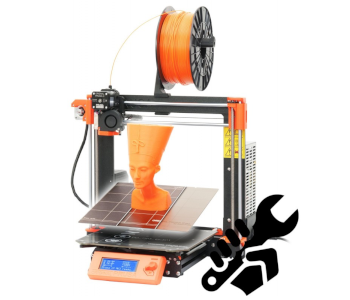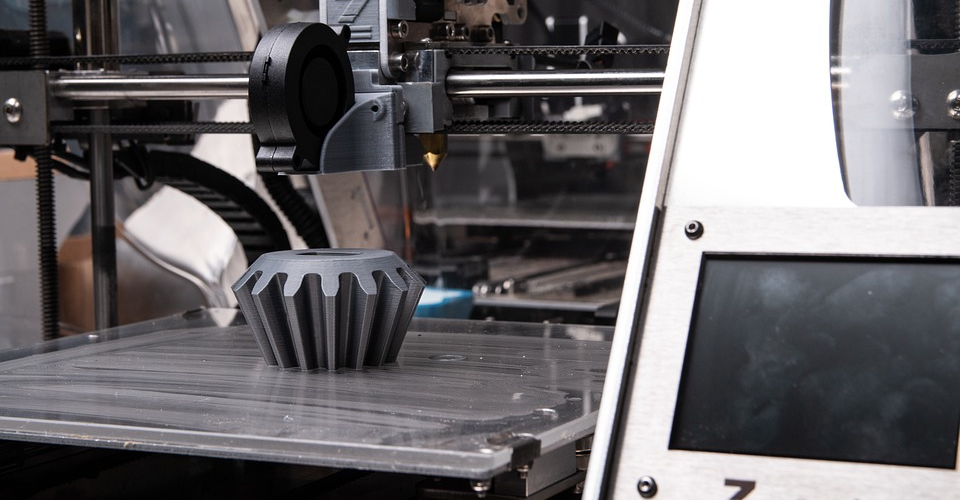Additive Manufacturing vs. Subtractive Manufacturing: Definition, Comparison, and Examples
Since the Industrial Revolution, manufacturing technologies have never stopped evolving. Businesses are always looking for ways to create products faster, cheaper, or with better quality. In the past few decades, some of the most reliable processes for manufacturing custom parts fall into either of two umbrellas: additive manufacturing or subtractive manufacturing.
From their names alone, it’s easy enough to infer how additive and subtractive manufacturing technologies differ on a fundamental level. That they are two sides of the same coin is as apt a metaphor as any we can come up with. What is it about these processes that have made them so popular? Are there applications that are more appropriate for one or the other?
Additive manufacturing

An additive manufacturing process creates the product from the ground up layer by layer. As with most modern manufacturing processes, additive manufacturing starts with a 3D model, typically created in CAD. This 3D model is then processed by a slicer software, slicing it into individual layers, which will be the basis for the real-world reconstruction.
Examples
The most common example of additive manufacturing in today’s processes is 3D printing. This is not limited to just Fused Deposition Modeling (FDM); all 3D printing technologies such as Stereolithography (SLA) and Selective Laser Sintering (SLS) are considered additive manufacturing processes. The workflow and raw materials may differ across these 3D printing processes, but the fundamental principle remains similar. There are also other, more traditional methods such as sculpting and welding which can also be considered examples of additive manufacturing.
Benefits
The biggest strength of additive manufacturing is its versatility in terms of design. Additive manufacturing can produce highly complex models or even designs with hollow interior sections – something that is impossible with other manufacturing processes. In fact, just about design that can be created in CAD can also be reproduced by additive manufacturing.
Additive manufacturing is often more practical for creating models of prototypes in small quantities. This is because an additive manufacturing machine, such as an FDM 3D printer, requires very little setup. With the 3D design on hand, you can fire up a 3D printer in a matter of minutes. Since the process is almost completely automated, no time needs to be spent on tooling changes. This level of flexibility has made additive manufacturing the technology of choice for “on-demand” production.
Since additive manufacturing does not cut away any scrap from existing material, the process inherently produces much less waste compared to subtractive manufacturing. For businesses, these can represent fewer expenses on waste disposal or recycling.
Limitations
Despite the versatility of additive manufacturing when it comes to design, it is severely limited in terms of materials. Most 3D printing technologies are limited to using plastics or plastic composites. Moreover, the layer by layer construction method results in structurally weak points where layers adhere to each other. This means that objects created using additive manufacturing may not be durable enough to support weight or to withstand extreme conditions. This has essentially limited additive manufacturing for creation of non-functional prototypes.
Although there are existing 3D printers that can print using metal, they are still very rare to be considered a significant presence in the industry. Creating a custom metal part using 3D printing is generally more expensive than creating it using CNC machining.
The process of building an object layer by layer is very slow, even for relatively fast 3D printing processes such as SLS and SLA. This makes additive manufacturing impractical for responding to high-volume demand. 3D printers also have build platforms that are quite limited in size. If the job calls for large parts or models, they will have to be printed as smaller components and glued together. This introduces additional work, not to mention more points of failure.
Subtractive manufacturing

In subtractive manufacturing, the design is reproduced by removing unneeded material from a solid, singular piece of metal, plastic, wood, glass, or composites. While it’s still possible for this to be done manually, virtually all modern manufacturing facilities use some form of Computer Numerical Control (CNC) machining. Through this technology, computer-aided drilling, milling, or turning of the raw material block is performed for maximum accuracy and repeatability.
Examples
Most manufacturing companies employ some form of CNC machining, a prime example of subtractive manufacturing. With a few tool changes, a CNC machine can be used for milling, drilling, boring, turning, or reaming. Nowadays, there are more sophisticated ways of cutting away unwanted parts from the source material, such as the use of lasers or water jets. Laser cutting is steadily developing a presence in many industries because of its speed, precision, and non-contact characteristic.
Benefits
Subtractive manufacturing preserves the original integrity of the material. This means that products made from subtractive manufacturing are much more durable, which has made this technology particularly popular in the automobile and aircraft manufacturing industries.
The quality of models and parts created subtractive manufacturing is typically superior compared to those of additive manufacturing. Since the process produces no visible layer lines, minimal work needs to be done during post-processing.
CNC machining is also a very fast process. Compared to the several hours that it would take for 3D printing to finish a moderate-sized project, CNC machining can finish cutting away a part in a matter of minutes. CNC machines are also less restricted by a build platform since the raw material can be positioned in any number of ways. This makes additive manufacturing appropriate for creating large, customized parts.
Limitations
Cutting or carving an object with an overly complex design or a hollow internal section is simply impossible with CNC machining. It also takes quite a bit of time to set up a CNC machine. Even small design changes may require some retooling, which has to be done manually. Thus, CNC machining is something that manufacturers reserve for high volume production.
Use additive manufacturing if…
- You need to create a model or a prototype with an especially intricate design or a hollow internal cavity
- You only need to create small parts
- You only need to manufacture a small volume
- You can live with a slow per unit manufacturing process
Use subtractive manufacturing if…
- You need very durable parts and models
- You are working with metal
- You need to manufacture a high volume
- The part you need to make is large
A hybrid solution?
Some manufacturers have chosen to the best characteristics of both additive and subtractive manufacturing, opting for a workflow that uses both. This is typically done by using additive manufacturing to create highly complex parts, which are then further refined by the usual CNC machining techniques.
There have been several successful implementations of this hybrid approach. Some of the best examples include polishing off and tapping of threaded holes on 3D printed products using milling tools.
Final thoughts
When it comes to manufacturing techniques, additive manufacturing via 3D printing is still the new kid on the block. Despite its excellent selling point of being able to create practically any 3D design, the technology is not yet good enough to render more traditional manufacturing methods obsolete. Subtractive manufacturing has been around for decades but is still widely considered a standard in several industries.
Not that they can’t share the stage, of course. Both additive and subtractive manufacturing have their place in the field of modern manufacturing. Additive manufacturing, particularly 3D printing, has revolutionized the prototyping process. Without a doubt, this relatively young technology has helped various firms and companies with their product development.
On the other hand, subtractive manufacturing is still the old reliable. These traditional methods are still what companies turn to when they need to produce a high volume of parts quickly and reliably. The technique is particularly suited to creating highly durable parts out of metal. With new technologies such as laser cutting and electrical discharge machining (EDM) being explored by more and more companies, subtractive manufacturing doesn’t seem to be in any danger of disappearing.


